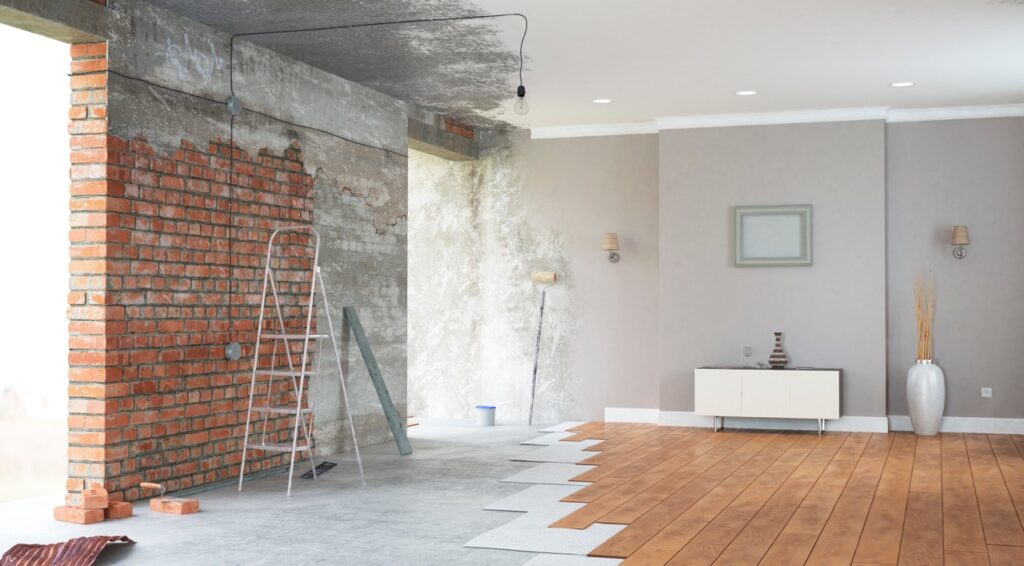If you’re a renter it can be intimidating to ask your landlord for upgrades, or permission to make cosmetic or structural changes yourself to your home. Whether it’s adding new appliances in the kitchen, landscaping outside of your apartment building, or checking on prior upgrades that have been promised, here are some tips from Rhino, experts on all things property management.
Understand the Lease
Before requesting changes or upgrades to the home or property, it’s important to understand what’s already detailed in the lease. Read through the document carefully to determine if there are any existing rules regarding changes that can be made.
Sometimes there’s already permission in the lease for tenants to repaint the rental as long as they return it to the original color and condition before moving out. Or, you may have the right to plant annuals in your flower beds without checking with the landlord first.
Knowing what’s written in the lease could save you from making a request and having it denied, as well as provide useful guidance if your request is approved. A thorough understanding of the lease or any applicable HOA CC&Rs will set a solid foundation for successful negotiations with your landlord.
Be Prepared With Supportive Data
Whether you’re just moving in or seeking to upgrade the place you’re already renting, it’s important to be prepared when asking your landlord for upgrades. Gathering relevant information ahead of time can strengthen your case as a tenant and make presenting the request easier.
Facts and figures to gather include potential savings offered by energy-efficient appliances, higher rental value for the next tenant, or noting any risks associated with not making improvements. Having this information on hand will save time while demonstrating that you have carefully considered the issue, making it more likely that your landlord will take your proposal seriously and find the cost worth it.
Taking the time to do the due diligence to support an upgrade request provides better results than a request off the top of one’s head and demonstrates your investment in the value of the rental property.
Offer to Do the Work Yourself
If you have experience in DIY upgrades, show your work to your landlord or property manager. Offering to do the work yourself can entice the landlord to approve your request because it can save him/her time and money. Instead of having to sub out the work, they can rely on your expertise to get the job done without the hassle of scheduling contractors.
To sweeten the deal for yourself, you could offer to do the work in exchange for a rental discount in lieu of pay. Never assume that you can get a discount for doing unapproved work, however. It’s always best to get such an exchange agreed upon in writing before making upgrades or doing routine maintenance yourself.
Ask Politely
Sometimes getting a request approved boils down to simply asking nicely! When petitioning your landlord or property manager for upgrades to the property, it is important to remember that politeness and respect go a long way. Be sure to explain that you appreciate the potential burden they put on your landlord and be mindful of their time. As long as your rental home is currently habitable, landlords are under no obligation to approve any requests made by renters. However, making reasonable requests with kindness can go a long way.
Respect Their Response
When you ask your landlord for upgrades to the home or property, it is important to listen to their response. Pay attention to any concerns they have and be prepared to negotiate a solution that works for both parties. If they’re worried about the cost of the upgrade or potential impacts on the property, offer alternative solutions like renting supplies instead of buying them yourself.
Upgrades Worth Asking For
There are a lot of small projects that can greatly impact the value and comfort of a rental property. Everything from new paint to new windows could be on the table. Some upgrades that might be worth asking for can range from temporary to permanent.
- New hardware on cabinets
- Repainting walls
- Installing new flooring
- Installing a sprinkler system
- Updating appliances to energy-efficient models
- Replacing exterior doors
- Swapping out light fixtures, or adding new light where there isn’t any currently hardwired
No matter what you’re interested in doing with your rental property, it’s often worth doing some research and taking the leap to ask.

